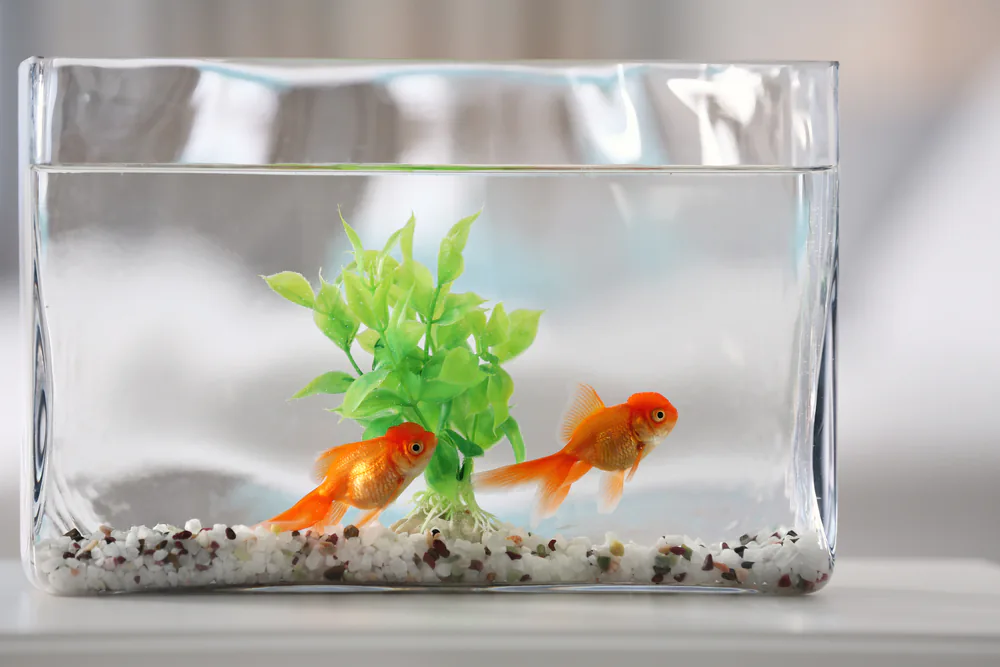I am writing this blog post because I have noticed that many pet owners are misinformed about the goldfish lifespan. For a lot of people, goldfish are just pets that are kept in a bowl. However, there is more to it. It’s sad to think how many goldfish have died prematurely before they even reached their full growth potential because their owners didn’t know how to care for them. Yes, it’s right, you can take good care of a goldfish and also get more life out of them. If you want to learn more about this, just keep reading to discover what you need to know.
- 1 Are Goldfish Easy To Keep Alive?
- 2 What Is The Average Goldfish Lifespan?
- 3 What’s The Goldfish Lifespan In Wild?
- 4 Goldfish Lifespan In Captivity:
- 5 Which Type Of Goldfish Lives Longest?
-
6
How To Improve Lifespan Of Goldfish?
- 6.1 1- Do Not Overcrowd The Tank
- 6.2 2- Choose The Right Type Of Food
- 6.3 3- Monitor Water Temperature And Quality
- 6.4 4- Install A Small Air Pump
- 6.5 5- Clean The Tank Regularly
- 6.6 6- Provide Your Goldfish With Enough Space
- 6.7 7- Reduce Stress
- 6.8 8- Consider Keeping Them In A Pond
- 6.9 9- Be Proactive About Diseases
- 7 Chronic Diseases Affecting The Lifespan Of A Goldfish
- 8 Frequently Asked Questions (FAQs)
- 9 Final Words
Are Goldfish Easy To Keep Alive?
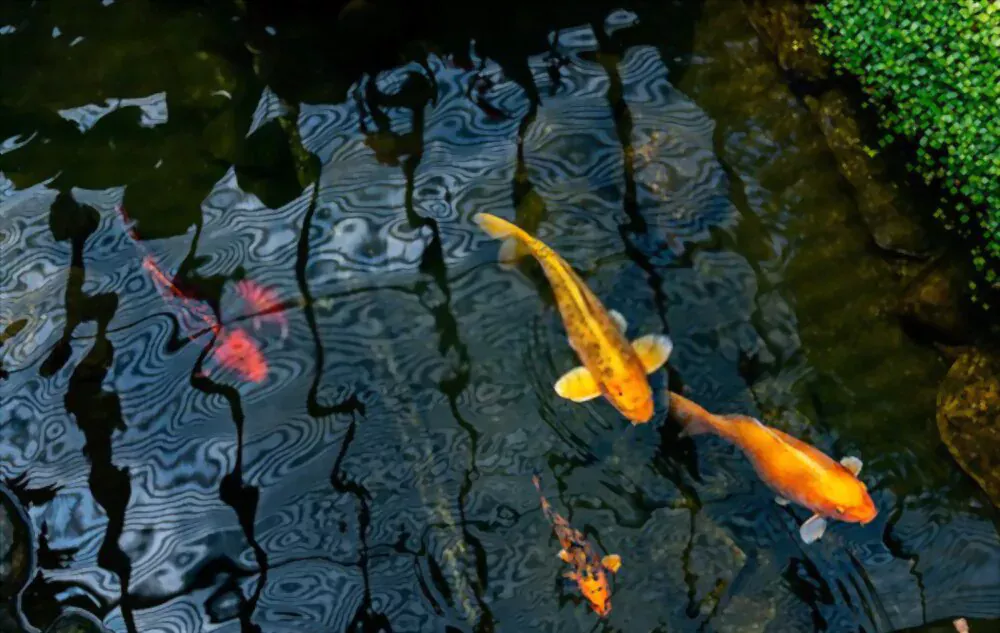
Goldfish are one of the most popular fish for aquariums, and for good reason, they are considered to be a hardy breed that can adapt to many different environments, whether it be a bowl or an expansive tank. They are generally very easy to keep alive and are more resilient than most other freshwater fish. They require almost no special equipment or care to stay alive. And also they are considered to be suitable fish for children because they are inexpensive and not too demanding.
What Is The Average Goldfish Lifespan?
According to a survey, a number of fish owners were asked how old their goldfish were and how long they had owned them? The results show an average lifespan of 4.04 years, with most living for between 3 and 5 years.
What’s The Goldfish Lifespan In Wild?
In wild, a goldfish’s lifespan can vary widely depending on how much they are exposed to predators and what type of food they have available. In general, though, a wild goldfish can live between 20 and 40 years.
Goldfish Lifespan In Captivity:
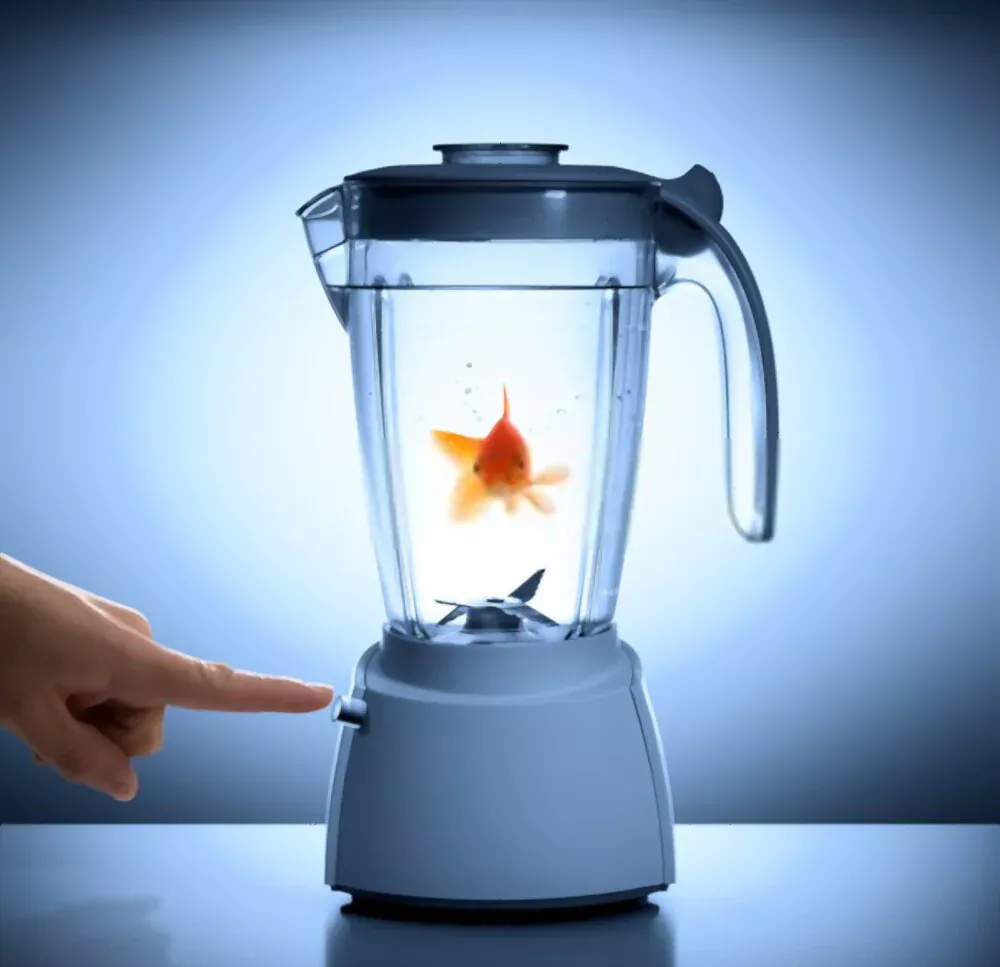
What Is The Lifespan Of A Goldfish In A Tank?
Goldfish can live for a long time, but the lifespan of goldfish varies with the type of goldfish, how well they are cared for, and the size of their tank. The lifespan of goldfish in captivity is usually shorter than their lifespan in the wild. This is because in captivity they are often exposed to different types of diseases and bacterial infections and they don’t thrive as much as they do in wild.
In a well-maintained aquarium with proper care, a goldfish can live around 10 to 15 years.
What’s The Goldfish Lifespan In Bowl?
Let’s assume the bowl has the capacity of 1 gallon (3.785 liters) or less and it doesn’t have any filter, like most bowls, then, unfortunately, your goldfish won’t be able to survive more than 1 year.
What’s The Goldfish Lifespan In Pond?
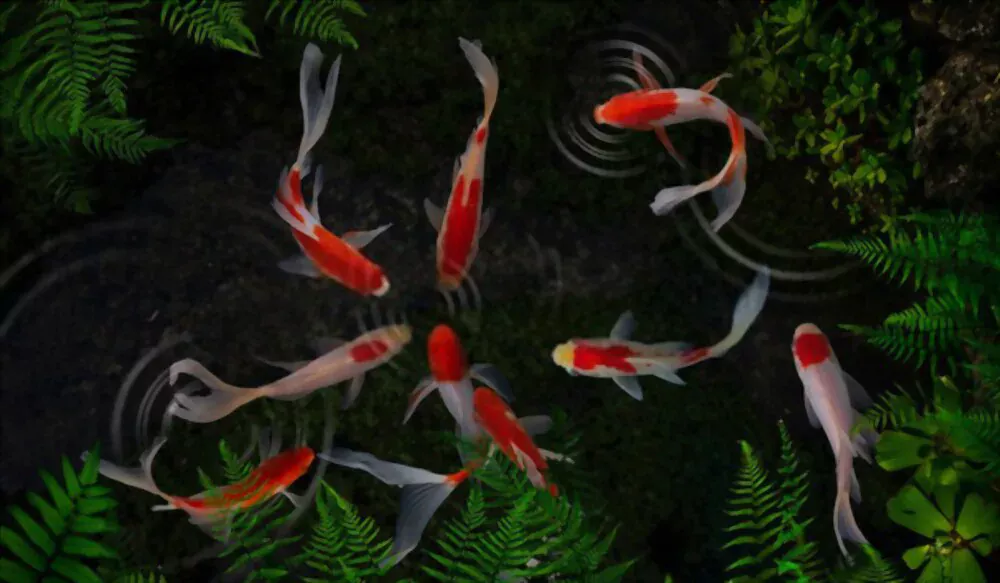
The lifespan of a goldfish in a pond is usually over 10 years, potentially 20 or more. Goldfish may live even longer than this if they are kept safe from birds and kept in an acceptable temperature range
Which Type Of Goldfish Lives Longest?
Comets are one of the longest-living varieties of goldfish, with an average lifespan of 8 to 20 years.
Shubunkins are another popular variety of goldfish with a long lifespan. They have an average lifespan of 10 to 20 years.
How To Improve Lifespan Of Goldfish?
The only way to improve the lifespan of goldfish is to keep them happy and healthy. However, keeping goldfish healthy and happy can be a challenging task if not done correctly. Here are some tips to help you keep your goldfish in top shape:
1- Do Not Overcrowd The Tank
Goldfish are a social species and need to be kept with others of their kind in a large enough tank. If you have more than one fish, make sure that there is plenty of room for them to swim and turn around comfortably.
A good rule of thumb is to keep only one or two fish, in a 10-gallon tank. If you have more than that in the same tank, it will cause stress on them and expose them to diseases.
2- Choose The Right Type Of Food
Goldfish will eat just about anything that they can fit into their mouths, which is why it is important to feed them a balanced diet consisting of live foods like brine shrimp, bloodworms, and tubifex worms along with high-quality flakes or pellets formulated especially for goldfish. They also enjoy live aquatic plants like water lettuce and water hyacinth.
It’s better to Feed your goldfish small amounts of food that sink to the bottom of the tank so that all of your fish can eat at once rather than having one overeat while others starve.
3- Monitor Water Temperature And Quality
The temperature at which your goldfish lives can have an impact on its lifespan. Colder water makes it harder for fish to digest food properly, which leads to malnutrition or illness. This can shorten their life span or even kill them if their immune system becomes compromised.
Generally, goldfish prefer warmer water than most other fish species, ideally between 65°F and 72°F (18°C – 22°C). Don’t expose them to temperatures below 60°F (15°C), or they may die from shock. If you live in a cooler climate, consider using an aquarium heater to keep the temperature steady.
In addition to keeping the temperature consistent, it’s important that you monitor the pH level of your aquarium regularly as well as check for ammonia and nitrites levels, both indicate poor water quality that can be fatal for your fish if not treated promptly.
4- Install A Small Air Pump
An air pump will help keep your fish healthy and happy. Fish need oxygen to live, and an air pump can help ensure that they get enough. You can place the air pump in a corner of your tank or a separate container for the purpose, with an air line running into it.
Make sure that the water level is low enough that there is no risk of flooding when you turn on the air pump and make sure to clean debris from it regularly.
5- Clean The Tank Regularly
A clean environment is one way to prevent disease in these fish because it reduces exposure to harmful pathogens that may be present in stagnant water or food particles left on the bottom of the tank. Wipe down all surfaces with mild soap and rinse thoroughly before returning them back into their tanks after cleaning out their filters and other equipment that might have been used during maintenance work.
6- Provide Your Goldfish With Enough Space
Goldfish are very active swimmers and need room to move around in their tank. A large aquarium is best for a single fish, while smaller tanks work well for groups of goldfish. Use caution when adding more than one fish to your tank as they may fight or bully each other.
7- Reduce Stress
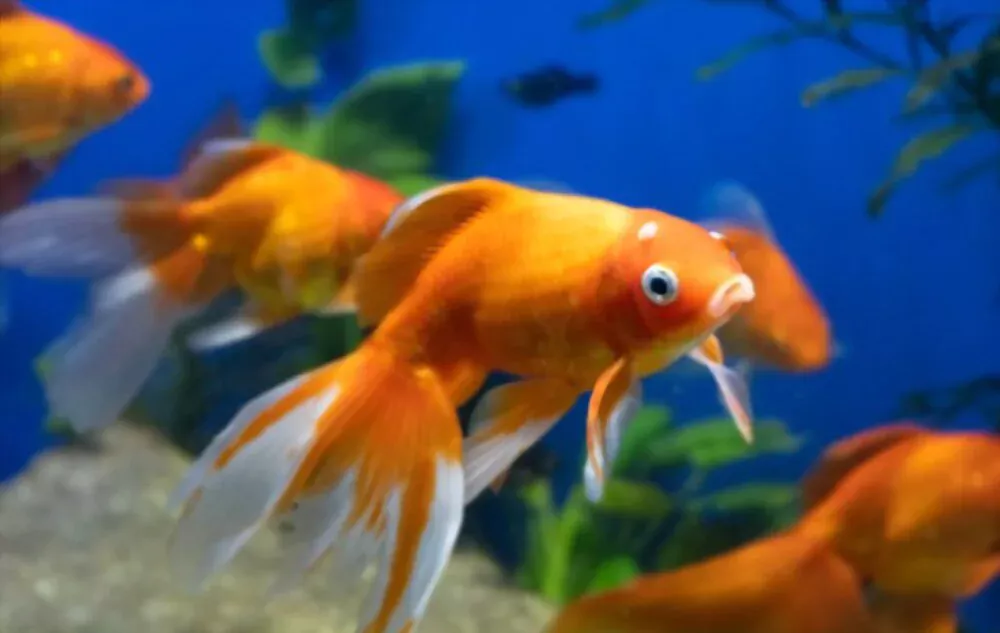
As you know goldfish need plenty of room to swim around but you should also add some decorations to their tanks, such as plants or rocks so that they have something to hide behind if they feel threatened by another fish or other object in the tank. This will reduce stress on your goldfish and help them live longer lives.
Sometimes they just need something else to look at besides their own reflections, which can be stressful for them. And tank decorations are the best solution to this problem.
8- Consider Keeping Them In A Pond
As we know goldfish need plenty of room to swim around in order to stay healthy, so it’s best to keep them in a pond (only if possible) rather than a tank or bowl. The larger the body of water, the better. But please make sure that the water temperature should stay within the acceptable range (65°F to 72°F (18°C – 22°C)).
9- Be Proactive About Diseases
As with any animal or person, it’s important to keep an eye out for signs of illness in your goldfish. If you notice any unusual behavior, such as lethargy (not eating), scratching at the gravel, or hiding behind decorations, it could be a sign that something is wrong with your fish. Consult a veterinarian if you notice any strange behavior in your pet goldfish. This might save its life.
Chronic Diseases Affecting The Lifespan Of A Goldfish
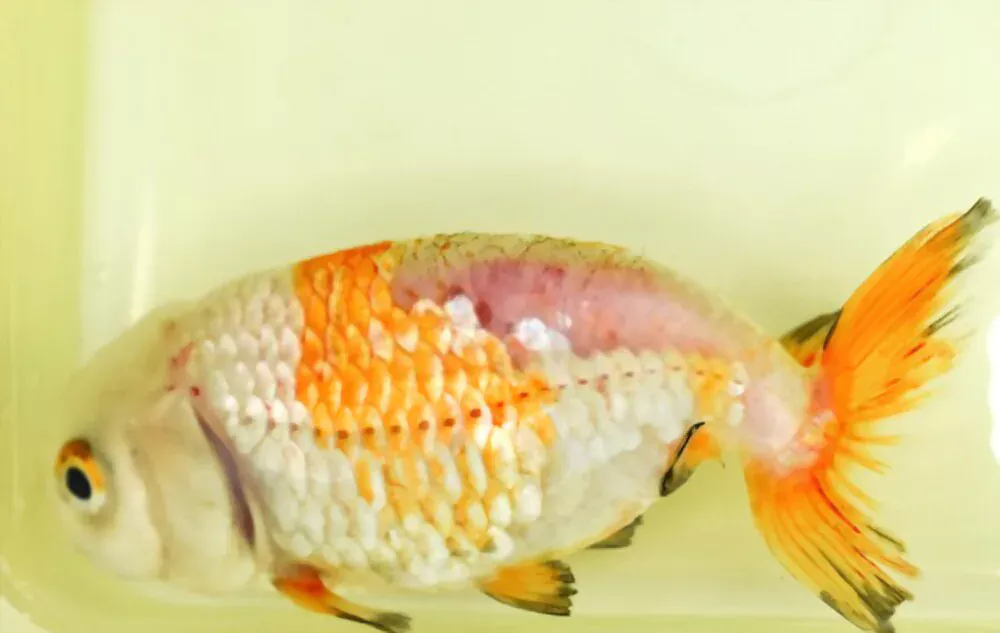
1- Fin Rot
Fin rot is caused by bacteria and/or fungi. These pathogens attack the fins and tail of the fish, causing them to fall apart or become damaged. The fin rot will start as small white or brown spots on the fins, which grow over time and eventually lead to large sections of the fin being lost or falling off completely, leaving behind open wounds which can become infected. If left untreated, fin rot can lead to death from septicemia or other secondary infections.
2- Dropsy
This is a condition caused by the accumulation of fluid in the body cavity and other cavities, especially the swim bladder. The most common cause of dropsy is kidney failure, but it can also be caused by liver disease or protozoan infestation.
Symptoms include swelling around the eyes, protruding eyes, sunken belly, lethargy, and rapid breathing. If left untreated, a fish suffering from dropsy will die within days or weeks.
3- Swim Bladder Disease
Swim bladder disease is a common problem in fancy goldfish. It’s most often caused by poor water quality, but certain types of fish food can also cause the disease.
If your goldfish has swim bladder disease, you’ll notice that it floats at the top of the water instead of swimming normally, or it might sink to the bottom and not be able to swim up again. You might also see signs of gas inside its abdomen.
4- Mouth Fungus
Mouth fungus is caused by an infection in your goldfish’s mouth. It can be caused by poor water quality, but it can also be transmitted from other fish. If your fish has mouth fungus, it will have ulcers in its mouth and may refuse to eat or drink. Eventually, the disease will kill your fish if left untreated.
5- Saltwater Ichthyophthirius multifiliis
This is a protozoan parasite that attacks fish and can be fatal if not treated. The parasite multiplies inside the fish, causing it to have sores and ulcers on its body, which eventually leads to death. A goldfish infected with this disease will develop white spots on its skin, fins, and gills. The spots will grow larger and eventually kill the fish.
6- Gill Flukes
These parasites attach themselves to the gills of the fish, where they feed off of the blood of the host. This causes irritation, which makes it difficult for the fish to breathe effectively. If left untreated, gill flukes can kill your goldfish in as little as six months. It is important to treat this disease as soon as you notice it so that your fish doesn’t suffer any unnecessary pain or discomfort.
7- Fish Tuberculosis
It is a bacterial disease caused by Mycobacterium marinum, which is found in water, soil, and sediment where infected fish have been. The bacteria infect the skin and gills of infected fish and cause them to become ill with symptoms similar to those experienced by humans with TB (tuberculosis). These include high temperatures (fever), weight loss, and lethargy. In the advanced stages of the disease, ulcers develop on the skin above the gills.
Frequently Asked Questions (FAQs)
What Is The Oldest Living Goldfish?
According to Guinness World Records, Tish is the oldest known goldfish with a lifespan of 43 years.
What Is The Lifespan Of Fancy Goldfish?
The lifespan of fancy goldfish can range from 10-15 years. This is assuming that proper care is given to the fish and that they are not overfed or underfed.
How long Do Carnival Goldfish Live?
The answer is that the average life span of carnival goldfish is around 10 to 20 years. However, the oldest carnival goldfish recorded was 43 years old!
How Long Can Goldfish Survive Without Food?
The exact amount of time that a goldfish can go without food depends on how large the fish is and how much it needs to eat each day.
Most people feed their goldfish twice a day, but if you’re away from home for 3 or 4 days, your goldfish may go hungry. As long as you keep your tank clean and well-filtered, your fish should be fine without food for 5 – 8 days. After about 10 days without food, most goldfish will die from starvation or disease.
How Long Do Goldfish Live Out Of Water?
Goldfish can live out of water for as long as their gills are wet. However, this is usually not recommended because it can be extremely stressful for your fish, and may even kill them.
If you have to temporarily remove your goldfish from the water, take them out with care. Hold your fish by its body and support its weight with both hands. Avoid touching its fins or tail, which can break easily and cause injury.
What’s The Goldfish Lifespan Without Filter?
A goldfish can live normally without a filter, but it will require more frequent tank cleaning and water changes. This means that you need to be prepared to do some work yourself and it will require more effort on your part.
Final Words
Hopefully, this guide has demystified the idea of how long goldfish live. No matter their age, they can quickly become a beloved pets in any home. Unfortunately, a lot of people are afraid to get a goldfish because they think that they will die in a couple of weeks. This is not true, If you take care of them correctly you can easily get goldfish to live for several years.

